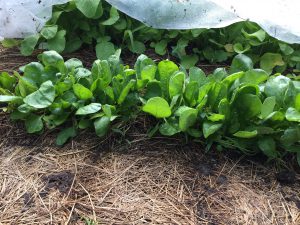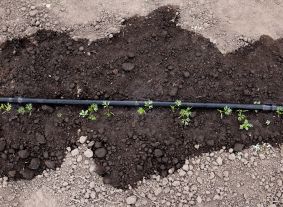The 50 Foods in Your Own Garden
Views: 1237

You may have read or heard the NPR piece on a report titled, “Future 50 Foods: 50 Foods for Healthier People and a Healthier Planet. The report, funded by the World Wide Fund for Nature (formerly World Wildlife Fund) and Knorr Foods, finds that 75% of food people eat globally comes from just 12 plant sources and five animal sources. Just three crops—wheat, corn and rice—make up 60% of plant-based calories in most diets. From a food security issue, this is dangerous.
What would happen if, say, a disease or pest suddenly appeared that could completely wipe out the global of wheat? The article also explains why repeatedly growing the same crops on the same land using the same commercial agricultural practices is a detriment to the environment. It is also detrimental to a human population that is estimated to hit 10 billion by the year 2050. You can read the complete article HERE to get a better understanding of the study’s purpose.
Growing Your Part of the 50 Foods
The study’s authors researched foods from around the globe to determine which are good for the planet agriculturally while also being highly nutritious for humans. They came up with 50 plant-centric foods—what they are dubbing the “Future 50″. They span from algae to grains to meat-like mushrooms. The good news is several of these crops are ones that many gardeners are already growing. Here are ten of those crops that are easy to incorporate into a home garden while also providing a high yield:
Broad/fava beans: In addition to the dried beans, the green pods can be eaten when young.
Pumpkin flowers and leaves: The flowers have a delicate pumpkin flavor and are high in many nutrients including Vitamin C. The leaves, which taste like an asparagus/broccoli/spinach mix, contain iron, carotenoids and Vitamin K and can be eaten fresh when young.
Okra: Grown the world over, okra is heat and drought tolerant and contains antioxidants.
Orange-skinned tomatoes: While grown just like red-skinned tomatoes, orange tomatoes are less acidic and can contain up to twice as much Vitamins A and B than red tomatoes. Why grow a different color? Demand for lesser-grown varieties increases the diversity of the food supply and help makes it more resilient.
Beet greens: The most nutritious part of the whole beet plant!
Broccoli rabe: High in Vitamins A, C and K. It’s a quick crop that can be harvested in about eight weeks from planting.
Kale: Packed with Vitamins A, C and K as well as manganese and copper. And it’s super easy to grow.
Spinach: A fast grower, it’s also packed with vitamins and nutrients and is amazing in its versatility.
Red Cabbage: 10 times more Vitamin A, twice as much iron and way hardier than the green variety. Why aren’t we eating more red cabbage?
Pak-choi: Described as a lettuce but with more crunch. One you can eat raw or, when grown larger, can be sautéed.
Keep Experimenting
The above is just a fifth of the 50 Foods list, which you can read in full HERE. There are so many more familiar and “what on Earth is that” crops that you as an adventurous gardener can take on. Given your growing conditions, garden size and sense of discovery, you could grow maitake mushrooms, watercress, walnuts, purple yams, teff, prickly pear cactus and even seaweed. Me? I’m going to give white icicle radishes a try—they say they deter squash-loving insects when companion planted with squashes. Hey, I’ll give any a try!
Meet Ellen Wells
When you’re raised on a farm, you can’t help but know a thing or two about gardening. Ellen Wells is our expert on edible gardening.…
Ellen's Recent Posts

Asparagus






